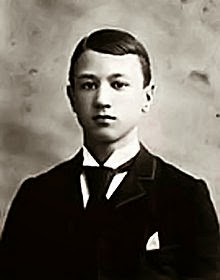
César Franck's first composition acknowledged by him was a set of Piano Trios which were composed in his last years as a conservatory student. He was eighteen when he began the 1st Piano Trio in F-sharp minor in 1840. Franz Liszt saw the set of piano trios and offered constructive criticism and encouragement. Liszt performed them after he settled in Wiemar as Kappelmeister to the court there. In 1845 Franck composed an oratorio that had a private performance for Liszt and other musicians. The work was a mild success, but when it had its first public performance a year later it received harsh criticism. Franck shelved the work and took up the life of a teacher, accompanist and composed a few smaller works on commission.
The 1st Piano Trio is Franck's early attempt at writing in cyclical form in which an entire composition is based on a few themes that keep returning in each movement. He was to perfect the form in his later compositions beginning in 1872. The 1st Piano Trio is in 3 movements:
I. Andante con moto - The movement begins with the solo piano playing the lead in to the first theme in F-sharp minor that is taken up by the cello. This theme is played three times during the movement. Franck relieves some of the monotony of the theme with expanding the theme, and one of the repeats has the theme treated fugally. The second contrasting theme is in F-sharp major and is played and developed twice in the movement. These two themes are not especially notable, but tension is built up by the contrast between the two. The first theme comes back to finish the movement abruptly.
II. Allegro molto - A scherzo in B minor that has two trio sections, with the second trio being a reworking of the second theme of the first movement. The first theme of the opening movement returns after the second trio and leads directly to the last movement.
III. Finale: Allegro maestoso - The final movement is in F-sharp major sonata form with the first theme being a variant of the first theme of the opening movement. The second theme is written in D-flat major, the enharmonic equivalent of C-sharp major, the dominant of the home key of the movement. The plodding first theme returns and leads to a section in D major, which in turn leads to the recapitulation. The movement ends in F-sharp major.
Franck's 1st Piano Trio has been criticized for being monotonous. While it is true that this early attempt at cyclical form pales in comparison to his later works, the 1st Piano Trio does give a glimpse of things to come. Liszt has been given his due for his contribution to cyclical form, but he was far from the first composer to use it. Franck was slow to develop as a composer, and no doubt he learned a great deal from Liszt's use of the form.








